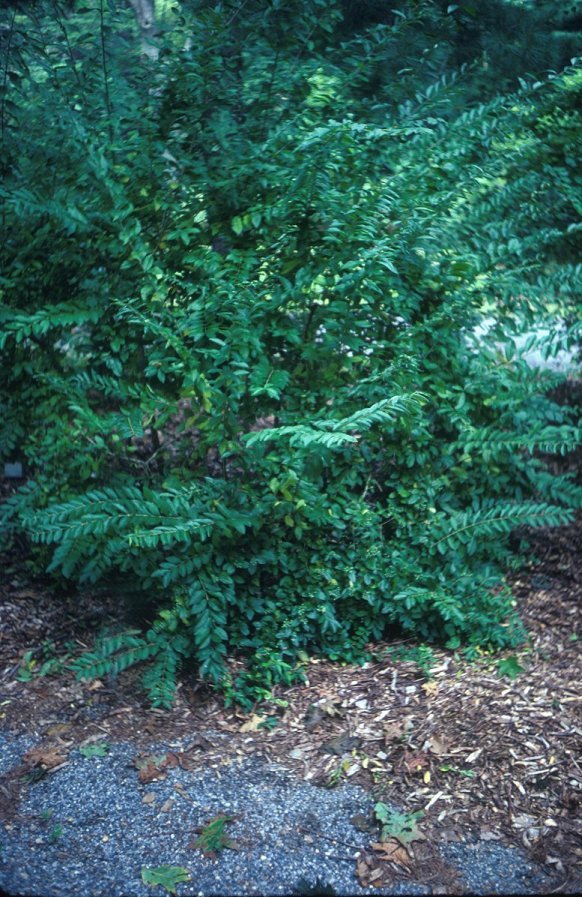| Botanical Name: Ligustrum amurense | |
| Common Name: Amur Privet |

-
Anatomy
-
Culture
-
Design
Plant Type
Shrub
Height Range
6-12'
Flower Color
White
Flower Season
Spring
Leaf Color
Dark Green
Bark Color
Brown
Fruit Color
Black
Fruit Season
Fall
Sun
Full, Half
Water
Low, Medium
Growth Rate
Fast
Soil Type
Sandy, Clay, Loam, Rocky, Unparticular
Soil Condition
Average, Rich, Poor, Well-drained, Dry
Soil pH
Acid, Neutral, Basic
Adverse Factors
Invasive
Design Styles
English Cottage, Formal
Accenting Features
n/a
Seasonal Interest
n/a
Location Uses
Background, Shrub Border, Foundation, Walls / Fences
Special Uses
Hedge, Screen, Naturalizing
Attracts Wildlife
Birds, Butterflies
Information by: Stephanie Duer
Photographer:
Photographer:
-
Description
-
Notes
Amur privet, a northern China native, is a dense, erect, multi-stemmed, fast-growing, deciduous shrub (semi-evergreen in mild winters) that typically matures to 12 to 15 feet tall and about 8 to 12 feet wide. It has elliptic to oblong leaves that are a deep, dull green above with hair on the underside midribs. Creamy white flowers in panicles bloom May to June and attact butterflies. Some think the flowers have an unpleasant aroma, but they give way to oval black drupes which ripen in fall and are enjoyed by birds.
Grow in average, dry to medium, well-drained soils in full sun to part shade. Tolerant of a wide range of soils, except wet ones. Tolerant of urban conditions. Responds well to pruning. Specimen plants actually require little pruning and should be pruned selectively as needed in spring after flowering. Hedges may be pruned in spring before flowering (if flowers are not a concern) and at 1-2 additional times during the summer to shape and to encourage dense branching. Plants may naturalize by self-seeding in optimum growing conditions, and may form thickets in areas where growth is not controlled.